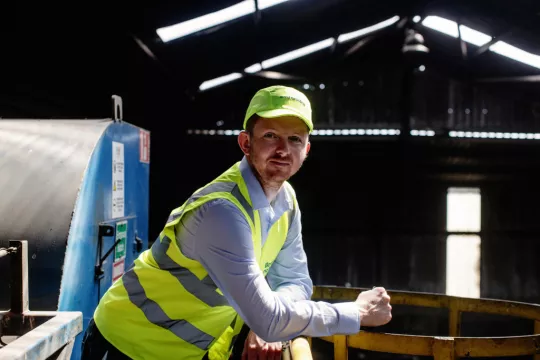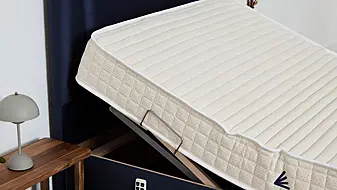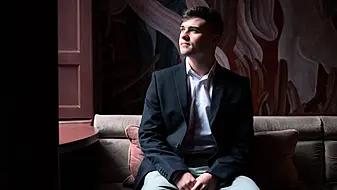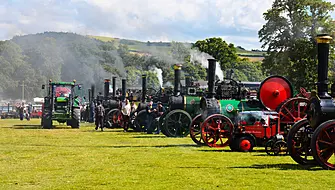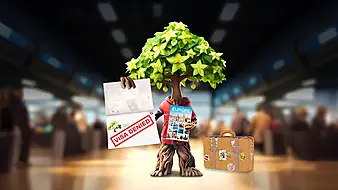As a climate solutions company, Bord na Móna is helping to deliver a greener future for Ireland. One of the primary ways it is doing that is through recycling.
“We have undergone a major transformation over the past 18 months, moving from a ‘brown’ to a green strategy,” explains Ryan O’Donnell, area manager for Bord na Móna Recycling.
“We have moved away from the use of fossil fuels, the burning of peat for power stations. Now, through wind farms, peatland rehabilitation, recycling and waste management and the creation of power from waste, it’s all about driving sustainability.”
Much of this is done through the company’s materials recovery facility (MRF) in Tullamore, Co Offaly, which accepts more than 40,000 tonnes of domestic and commercial recyclable waste, from 135,000 customers, each year.
That includes major facilities such as MRF Tullamore, in Co Offaly, which specialises in recycled household and commercial waste. The plant, in which Bord na Móna has invested more than €5m, in upgrades, mainly targeted around improving the recovery yields and purity levels from recycling material.
Closing the loop
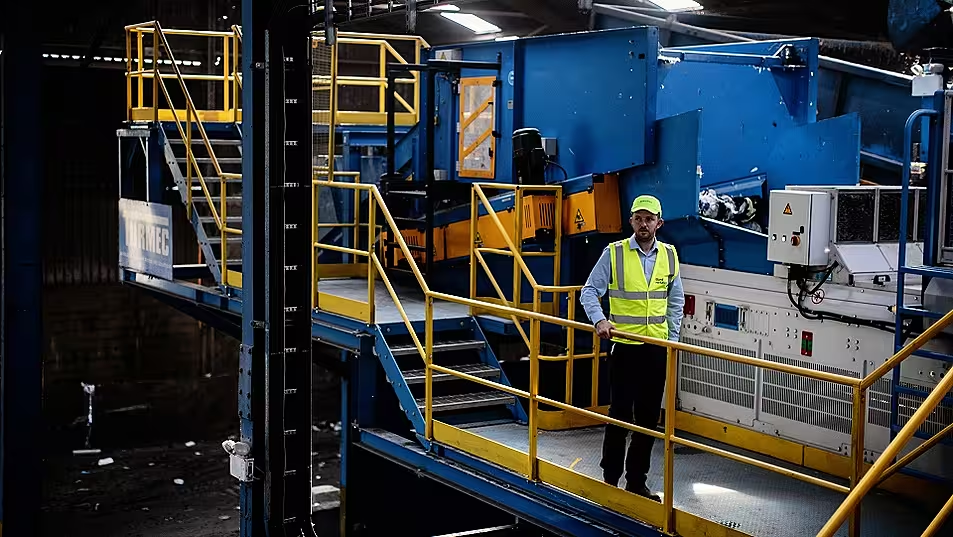
Recycling plays a pivotal role in the circular economy, O’Donnell says. “When you are recycling materials, you are keeping them in a closed loop that sees them emerge as a new product. In our case, recyclable materials are sorted and repurposed into commodities which we can trade for repurposing on the recycling market.
“Our aim is to be the leader in Ireland for extraction of recyclable and recoverable materials in waste.”
The process is fascinating. Once materials arrive at one of the company’s recycling facilities, they are sorted into commodities such as paper, cardboard, PET (such as plastic drinking bottles), HDPE (shampoo bottles), and PTTs (yoghurt pots, food tubs and plastic trays).
Paper and board are extracted and recycled into new paper products. Plastics are sent to be turned into a flake, which can be reprocessed into new containers. Metals, which include aluminium drinks cans and tin cans, are melted down for reuse.

“It’s a closed loop recycling model, from bottle to bottle, so to speak,” he says.
Across its overall recycling business, Bord Na Móna Recycling has 13 sites across Ireland and deals with 450,000 tonnes of various different types of waste materials per year. It also offers specialised solutions for certain waste streams that would otherwise be exported. Used tyres are routed to Bord na Móna’s Drogheda plant. There they are shredded, with magnets used to take out metals, and turned into a rubber crumb used for everything from children’s playgrounds to equestrian arenas.
Old farm film, of the type used to wrap silage, is turned into black plastic pellets which, in turn, are used to make more farm film.
Turning waste into energy
Bord na Móna also operates a major landfill site at Drehid in Co Kildare.
“Landfill of general refuse was something that was a necessity in the past, purely because the infrastructure and technology did not exist to allow Ireland better manage its general refuse,” O’Donnell says.
Now though, there has been a shift. “We now see landfill as being geared towards wastes that have no remaining recoverable or recyclable value,” he says.
“Landfill is the last resort for us. We do everything not to landfill general refuse, and we only landfill a tiny percentage of the 170,000 tonnes of general refuse that we collect each year. Typically, this would only happen during unplanned outages in waste to energy facilities.”
The methane gas captured from Drehid landfill is converted into enough electricity to power 8,500 homes per year.
“We harness the gas that comes off the landfill via an underground pipe network, which we feed into a gas processing unit and produce electrical power,” O’Donnell explains.

Bord na Móna Recycling also sends material extracted from waste for Solid Recovered Fuel (SRF) production. SRF is a high-quality alternative to fossil fuels, made from residual waste left behind once all commodities and contaminants have been removed. It includes fibres and fragments of paper, plastics, wood and textiles that burn well and is suitable for powering cement factory kilns.
Currently 70 per cent of the waste material Bord na Móna Recycling collects is turned back into commodities, but that figure could be higher, O’Donnell reckons, were it not for the fact that so much of the items placed into recycling bins are contaminated.
It’s the yoghurt pot that hasn’t been washed out, or the food waste that gets inadvertently deposited in the recycling bin.
“Contamination is a huge problem in the industry generally. It’s all the textiles, wood, coffee cups, glass, batteries and, the biggest, food waste,” he says.
“According to Environmental Protection Agency statistics, if we all got our recycling right, with no contaminants, our recycling rate would go up by one third in households and by one half in commercial waste.”
Fighting climate change
As such, both householders and commercial waste generators have a huge role to play in helping Ireland attain its environmental targets, not least because putting contaminated items into the recycling bin “leads to more washing, drying and energy usage down the line”, he points out.
By contrast, growing the circular economy can minimise our impact on climate change. “Recycled goods in the manufacturing process use less energy than raw materials do, so using a recycled plastic flake is better than using virgin oil. It leads to a much lower carbon footprint and reduces the need for extracting, refining and processing those raw materials in the first place,” he says.

“If done properly, recycling helps with climate change. It reduces the amount going to landfill and incineration. The flip side however is that once an item doesn’t make it into the recycling stream, if it goes into the wrong bin, it leaves the loop and is gone.”
The Government’s Waste Action Plan for a Circular Economy is providing a road map for all aspects of waste and recycling, which will help.
Bord na Móna is doing its part, not just through efficient waste management and recycling, but by adopting the greenest possible practices internally, including the introduction of electric cars, bin lorries, cranes and forklifts. “It’s the right move,” he says.
Innovating for the future
The company is also innovating to see what more it can do.
Currently its HDPE waste, the kind of plastic used to make bleach bottles and milk containers, is shipped to the UK and Europe. “Now we are working with an Irish company to see if we can get our product clean enough to be reused for the manufacture of pipes,” he explains.
“That would mean that instead of going on a ship and two lorry journeys to the UK, it would be going just up the road. It’s all part of what we do, rethinking waste and recycling solutions for climate action.”
Discover more about Bord na Móna Recycling at bnmrecycling.ie
